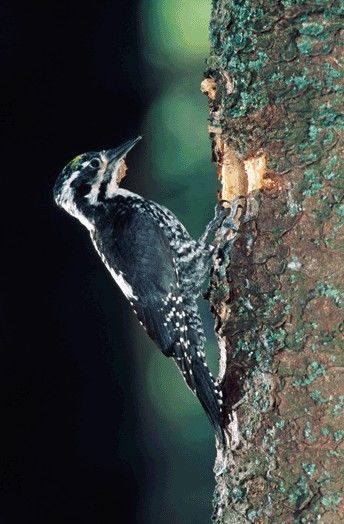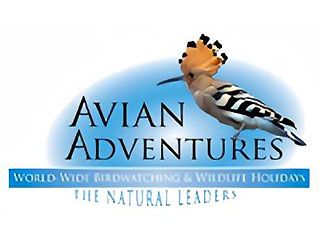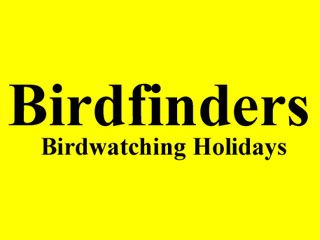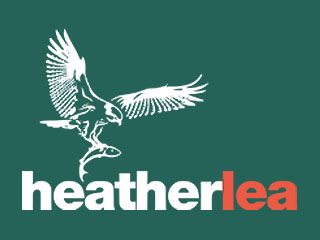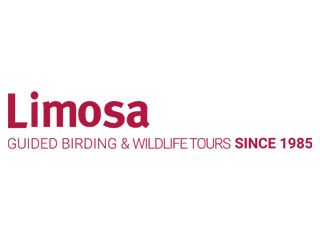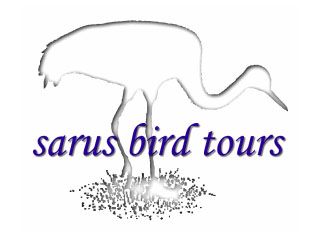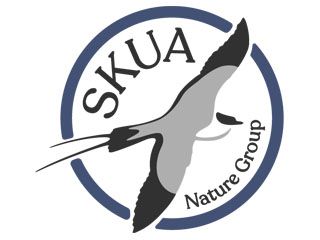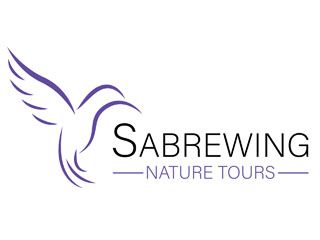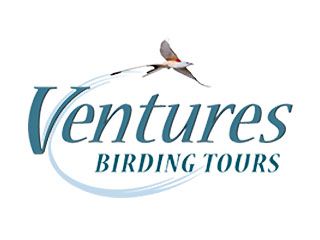Ecotours Worldwide - Stop Dreaming - Start Booking
Kiskunsag Steppes & Slovakian Hills
Similarly to Hortobágy, the scenic Kiskunság National Park still preserves parts of the once continuous Eurasian steppe, the so called "puszta". The park hosts one of the biggest populations of Great Bustards in Europe, but has other highlights to offer as well. Alkaline lakes and temporary flooded areas of grassland attract huge numbers of ducks, geese and waders. Species include Ferruginous Duck, Garganey, Black-winged Stilt, Mediterranean Gull, White-winged Black Tern, Kentish Plover and other migrating shorebirds. We should see Stone-Curlew, Collared Pratincole, Tawny Pipit and Red-throated Pipit.
Fact File
- 8 days in Hungary & Slovakia visiting national parks famous for rare birds & mammals
- start and finish in Budapest
- using 2 accommodations located on site, 1 of them is our own lovely Kondor EcoLodge
Highlights
- visiting great National Parks and protected areas such as Kiskunsag & Pol‘ana
- wide variety of birds, mammals, butterflies and habitats
- plenty of raptor and several owl species, all 10 woodpeckers of Europe
- unique scenery of the Westernmost edge of the Asiatic steppes & a former volcano in the Slovakian hilly region
- rather easy trails, short driving distances through well preserved landscapes
- rural lifestyle & wide variety of wildlife; birds, mammals, butterflies, flowers & amphibians
Accommodation
- 4 nights at our own charming, bird-reach Kondor EcoLodge in the heart of Kiskunság NP, Hungary
- 3 nights in Slovakia, Pol'ana region, again on site surrounded by nature
Price
www.ecotours-worldwide.com/dates-prices
Ask for the actual price.
Our price includes:
- all travel as noted in the itinerary;
- all accommodation based on shared rooms (most rooms are twin bedded), at most locations there are single rooms as well for extra charge (Please ask for a single room at the time of booking!);
- 3 meals per day, generally breakfast at the accommodation, packed lunch, dinner (consists of at least two courses);
- services of the leader(s);
- trip materials.
Not included:
- flights to and from Budapest;
- optional programmes to places of interest and entrance fees involved;
- airport and other departure taxes, tips;
- food beyond generally 3 meals/day mentioned in the itineraries;
- excess baggage charges;
- telephone calls;
- alcoholic beverages;
- compulsory personal insurance.
If you have questions about the inclusion of any cost item, please contact us.
Activity level
- Generally easy to moderate walks, some steep slopes at Pol'ana, but short distances
- Lots of onsite wildlife observing possibilities
- Weather can be cool at higher regions while generally favourable at lower elevations
Itinerary
Days 1-4
Our Kondor EcoLodge is less than 60 miles from the Budapest airport in the heart of the Kiskunsag National Park, so we cross some of the attractive parts of it after your arrival. The lodge grounds itself can yield some of the birds that could become easily the highlight of our day in the field. Bee-eaters abound in the National park and a few breed nearby as well as Rollers and Red-footed Falcons. Other birds that can postpone our morning departures from the lodge are Golden Oriole and Hoopoe. Common and Black Redstart both breeding in the garden, Spotted Flycatcher as well. Mammals are also noteworthy – Eastern Hedgehog, Steppe Polecat, Red Squirrel, Otter, European Souslik – but with the exception of Souslik they are usually more difficult to be located.
Two highly praised butterflies are common there – Southern Festoon is an early species while Common Glider regularly seen later during the year. Others are Cardinal, Lesser Fiery and Large Copper, Queen of Spain and Knapweed Fritilary, Ilex Hairstreak, Hungarian Skipper or Black-veined White.
Depending on timing we can find a wide range of dragonflies, such as rarities like Spotted Darter and Lilypad Whiteface, while commoner ones include Hairy Hawker, Ornate Bluet, Small Bluetail, White-tailed Skimmer, Balck-tailed Skimmer and Small Spreadwing. We will try to run a good list although the best odonatologists of the area are Bee-eaters that examine all local species very closely. :-)
One of the typical habitats of Kiskunsag is the flat, perfect plain of the “puszta” which has several different types ranging from dry grassland to marshy meadows. Kiskunsag grassland is the typical habitat for population of Great Bustard. This is also a home to Stone Curlew, Tawny Pipit, Lesser Grey Shrike, Wheatear, and a set table for foraging Imperial Eagle, Red-footed and Saker Falcon. If we want to see Collared Pratincoles we should go where puszta meets arable land. Occasionally a Black-winged Pratincole can be spotted there too.
If we should choose the flag species of this area we would go for Roller and Great Bustard. The best Hungarian populations for both are at Kiskunsag. To see the Great Bustard we have to drive to vast plains of north Kiskunsag while Roller core breeding area can be found right where our hotel is. Sightings of displaying bustards or roadside feeding Rollers are truly an unforgettable experience. Red-footed Falcons are also numerous and they add to the colour range of local birds. Indeed, the most colourful species seem to abound here.
During our stay we will check the most important natural alkaline lakes which generally have very high salt concentration. They are rather flat and rich in nutrients and thus very suitable for thousands of birds that stop by, namely large flocks of Ruff and Dunlin. Different species can be found at gravel pits and alongside the canals connecting Tisza and Danube rivers with drier areas. Floodplains of River Tisza and its several oxbow lakes are also perfect birding spots. This group of breeding water birds are include Avocet, Black-winged Stilt, Kentish Plover, Pygmy Cormorant, Black-necked Grebe, Squacco and Purple Heron or Spoonbill. Reedbeds are teeming with Penduline Tit, Bearded Reedling, Great Reed, Savi's and Moustached Warbler. It is usually more common to hear than to see Bittern, Corncrake, Spotted Crake and Little Crake, but we should be able to catch a glimpse of some of these. Marsh and Montagu´s Harriers hover over the fields and sometimes a Short-toed Eagle turns up.
A panic in the flocks of Ferruginous Duck, Shoveler, Garganey and Red-crested Pochard announces a presence of White-tailed Eagle or Saker Falcon. Whiskered Tern breeds in a common way while Black and White-winged Black Terns do so in favourable years only. Alongside Black-headed and Yellow-legged Gulls there are a few colonies of Mediterranean Gulls as well.
We shall visit one of the seasonal farms on puszta and observe livestock and birds like Tawny Pipit, Crested Lark, Little Owl or Lesser Grey Shrike. We will also try to go out at night to watch and listen to some of the local Scops Owls and Nightjars. The hotel surroundings may offer a chance to see a display flight of the latter.
In puszta many nice flowers bloom quite early. Some can be out in the time of our visit like Purple Mullein (Verbascum phoeniceum), Oriental Larkspur (Consolida orientalis), pink Dianthus serotinus, Goat´s beard Tragopogon floccocus, Golden drop Onosma arenaria, Alkanna (Alkanna tinctoria), milkvetch Astragalus asper, Blue Iris (Iris spuria), Marsh Pea (Lathyrus palustris), Greater Spearwort (Ranunculus lingua), Marsh Gladiolus (Gladiolus palustris), Woodcock Orchid (Ophrys scolopax), Late Spider Orchid (Ophrys fuciflora) or endemics Cirsium brachycephalum and Plantago schwarzenbergiana. We will search for them in sand dunes and wet meadows.
Amphibians are well represented and we can find Fire-bellied Toad, Green Toad, Common Spadefoot, Moor Frog or Tree Frog.
The magnificent Stag Beatle or various eye-catching rosechafers are the big beatles that we can see in Kiskunsag.
Days 5--8
Today we travel from Hungary to Slovakia. We choose a route and stopping sites depending on the main interest of the group; there are surely great areas to spend some time and enjoy what nature offers. We can drive alongside the Bukk Hills in a great valley. Then we reach Cerova which is a series of low volcanic hills that spread along the Slovak-Hungarian border. Finally we drive in Polana region which crater of a huge ancient extinct volcano.
Our hotel is set in central Slovakia in the height of 1350m at the edge of a nearly 1000ha reserve. The local spruce primeval forest is regarded to be the southernmost one in the western Carpathians. Being situated on a ridge of former volcano caldera it will be not demanding for us to walk there. Early morning birdwatching can start right outside the hotel. The Norwegian Spruce has been going through tough times over Central Europe and old stands are in many places infested by Spruce Bark Beetle. Also here you will see the decaying trees and young ones germinating below the dying canopies creating very diverse habitats that provide fantastic food base for many forest denizens.
We will not use a bus for most parts of the days since everything is within easy walking distance. Some nice beech stands can be found at a lower elevation and we have a chance to walk around and do some birdwatching. Typical species include here Coal and Crested Tit, Firecrest, Siskin, Crossbill (not every year), Ring Ouzel, Wood Warbler and on the adjacent meadow also Woodlark and Redstart. Nutcrackers stay very elusive during breeding season but they should be already fledged by June. Red-breasted Flycatcher arrives as late as May from wintering grounds in Asia and then it gets quite vocal and often easy to see like the Collared Flycatcherwhich arrives as soon as April and inhabits lower elevations.
However, our main target is to see the woodpeckers. Three-toed and Black Woodpecker should be relatively easy to see. We will also look for the Grey-headed and White-backed Woodpecker in a deciduous forest. Hazel Grouse is rather common but always difficult to see. Much time will be spent looking for Pygmy Owl.
Depending on timing different wildflowers will be in blossom at the meadow of the hotel. The most interesting species are Sudeten Violet (Viola sudetica), Cat´s Foot (Antennaria dioica) and Elder-flowered Orchid (Dactylorhiza sambucina). Blue-sow Thistle (Cicerbita alpina), Austrian Leopard´s Bane (Doronicum austriacum) and Alpine Rose (Rosa pendulina) are confined to forest.
Wolf, Brown Bear and Lynx all live in the area and are sometimes seen, especially in more remote places. It is much easier to find other vertebrates such as newts. Alpine and Carpathian Newt both occur there. Fire Salamander is common throughout whole Carpathians but often difficult to see. It comes out in large numbers after rain. The typical lizards are Viviparous in wet locations around the hotel and Wall on rocks and dry areas. Yellow-bellied Toad and Smooth Newt live at lower elevations.
We will also drive down the foothills where large open areas with scattered settlement are found. This is a magnificently photogenic region where we shall spend the whole day. Each small farmhouse can host a wonderful array of birds. Among the most typical are Syrian Woodpecker, Wryneck, Icterine Warbler and Lesser Grey Shrike. A Hobby often circles low above the hillsides and Hoopoe can be spotted too. Banks of streams have Nightingales, River Warblers and Sombre Goldenrings while sunny slopes provide nesting possibilities for Red-backed Shrike and Barred Warbler. Now and then we can hear Quails call and we might catch a glimpse of a Corn Crake. We should have a picnic at a farmhouse where locals will serve coffee and tea while we will watch the birdlife around and look at flowers on the meadow. Flower meadows as well as strips of fields with plenty of rare weeds are a treasury of insect life. We will try to catch a few grasshoppers and butterflies like Purple-shot and Purple-edged Copper, Woodland Ringlet, Chequered Skipper or Duke of Burgundy Fritillary.
Local meadows have often carpets of flowers dominated by daisies, Meadow Clary (Salvia pratensis), Corn Flower (Cyanus segetum), Sticky Catchfly (Steris viscaria) and Spread and Peach-leaved Bellflower (Campanula patula and persicifolia). June is the right period for Corn Cockle (Agrostemma githago) and several orchid species like Early Marsh Orchid (Dactylorhiza incarnata) and Heath Spotted Orchid (Dactylorhiza maculata). Wet areas have Grass Of Parnassus (Parnassia palustris), Globeflower (Trollius altissimus) and rarely also Siberian Iris (Iris sibirica).
While having a rest we should keep an eye open for a sudden surprise in the sky like Black Stork, Goshawk or Golden Eagle.
We will be after local butterflies that include such rarities as Common Glider or Osiris Blue. Scarce Fritillary has large populations but we may be a little late to see it there. Flowers will be represented by Love-in-a-mist (Nigella arvensis), Hairy Flax (Linum hirsutum), bush Bladder Senna (Colutea arborescens), Rose Campion (Lychnis coronaria), Sainfoin (Onobrychis vicifolia) and Hungarian Houndstongue (Cynoglossum hungaricum).
Rock Bunting is a regular breeder on Somoska castle ruin that offers great views of northern Hungarian territories. We should drive past another ruin in Filakovo, place of famous battles. Castle walls are sometimes a good place for warm loving plants like everlasting flower Xeranthemum annuum or bellflowers.
According to your flight schedule we will travel back to Hungary. The journey from Pol’ana to Budapest airport takes approximately 3-4 hours.

Contact
Phone: Call May-October; Text all year
+36 30-645-9318 or +36 30-211-0006
Call Nov-April: +506 84961012 or 84961417
e-mails:
ecotoursgabororban @ gmail.com
toucanbirdingecolodge @ gmail.com
Our mission
Our first priority is to save habitats & species.
Secondly we would like to share our knowledge of wildlife and encourage you to participate directly or indirectly in protecting nature.
We are also working continuously on our carbon balance with developing our 23 hectares of wildlife reserve.

